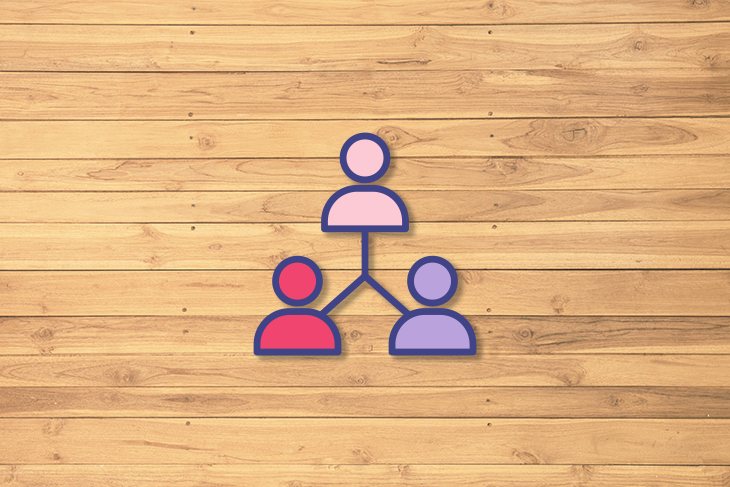In this guide, we’ll define what a technical product manager is, distinguish between a technical PM and a regular product manager, and review the skills and competencies required to fulfill the technical product manager’s responsibilities.

We’ll also review how a technical PM spends their time on a day-to-day basis and share some tips to help you nail your technical product manager interview.
The product manager and technical product manager roles are broadly defined and sometimes it’s hard to understand the differences and nuances between them.
Technical product manager, sometimes called inbound product manager, is a product management role that comes with additional responsibilities that require technical knowledge and skills.
That said, a technical product manager isn’t expected to do any programming or coding; they just need to understand and appreciate the engineering and technical aspects of the product development lifecycle.
In this guide, we’ll explore more aspects of the roles and responsibilities, the difference between a technical product manager and a regular product manager, and what a typical day-to-day looks like.
Often organizations have technical product managers and product managers performing alongside one another with little clarity as to the distinction between the roles. While there is some degree of overlap, the roles are designed to focus on different aspects of the product management lifecycle.
As mentioned earlier, the technical product manager is sometimes referred to as an inbound product manager. This means the person in this role is expected to understand, approve, and collaborate on aspects of engineering , technical architecture, and design for the product.
Therefore, a technical product manager must excel at working with engineers, architects, and designers. Though not expected to code or program the application itself, the technical product manager needs to understand and appreciate all the aspects of the technical design, technology architecture, user experience (UX) design, and decisions around these.
The matrix below elucidates some key differences between the technical product manager and traditional product manager roles:
| Technical product manager | Product manager | |
| Alternativee title | Inbound product manager | Outbound product manager |
| Works with | Works with engineering, UX design, architects, product owners, system analysts | Works with customer success, sales, marketing teams , other product managers, business analysts |
| Activities/tasks | Approves and collaborates on technical designs, technology architecture decisions, UX designs, technical tradeoffs | Market research, sales demos, developing marketing collaterals |
| Ownership |
|
|
| Background, skills, and qualifications |
|
|
| Focus | Product development | Product definition and go-to-market |
Common responsibilities of the product manager and technical product manager include:
The technical product manager is generally internally facing (hence the inbound product manager title). Therefore, the technical product manager falls under the same organizational structure as a product manager and reports, depending on their seniority, to a senior technical product manager, group technical product manager, staff/principal technical product manager, or head of product.
The technical product manager works closely with development teams, system analysts, and technical architects.
A technical product manager is responsible for:
A typical day in the life of a technical product manager would be focused on meetings and interactions, managing tasks and tools, and preparatory work toward upcoming deliverables.
Let’s look at what exactly falls under these buckets and roughly what percentage of the TPM’s day is dedicated to each category of tasks:
Given that the technical product manager works extensively with the engineering teams, the meetings they attend are heavily skewed toward interactions with engineering/technology teams and user experience teams.
Some examples of meetings a technical product manager might attend include:
A technical product manager would also attend meetings with product leadership and the peer product group, such as:
The technical product manager works individually on assigned tasks and on updating the tools (such as agile project management tools, etc.). Activities falling under this category include:
Technical product managers spend the remainder of their time doing miscellaneous work toward future deliverables. These tasks might include:
If you’re looking to move into a technical product manager role, you’ll want to demonstrate that you can fulfill all the responsibilities and competencies described above.
The technical product manager interview will likely touch upon:
Companies looking to hire a technical product manager will look for candidates who have:
The questions will likely be similar to those asked during a product manager interview. You should prepare to speak articulately with clear examples about your decisions around:
You should also be prepared to answer case study questions that cover one or more of the decisions outlined above.
Lastly, don’t be surprised if they send you home with a case study assignment.
The technical product manager interview will also likely include questions around your soft skills. Be prepared to talk about your skills related to the following:
Featured image source: IconScout

LogRocket identifies friction points in the user experience so you can make informed decisions about product and design changes that must happen to hit your goals.
With LogRocket, you can understand the scope of the issues affecting your product and prioritize the changes that need to be made. LogRocket simplifies workflows by allowing Engineering, Product, UX, and Design teams to work from the same data as you, eliminating any confusion about what needs to be done.
Get your teams on the same page — try LogRocket today.

A practical guide for PMs who want to stop being bottlenecks, delegate smarter, and lead teams effectively with a clear ownership framework.

Stop letting unreliable data block features. Treat data as inventory to track quality, ownership, and ship with confidence.

Learn why slide decks slow teams down and explore better tools like whiteboards, PRDs, and prototypes to improve collaboration and alignment.

AI PM roles are evolving fast. Learn the five types of AI PMs, the skills they need, and how they shape AI products across industries.